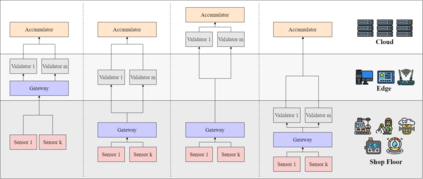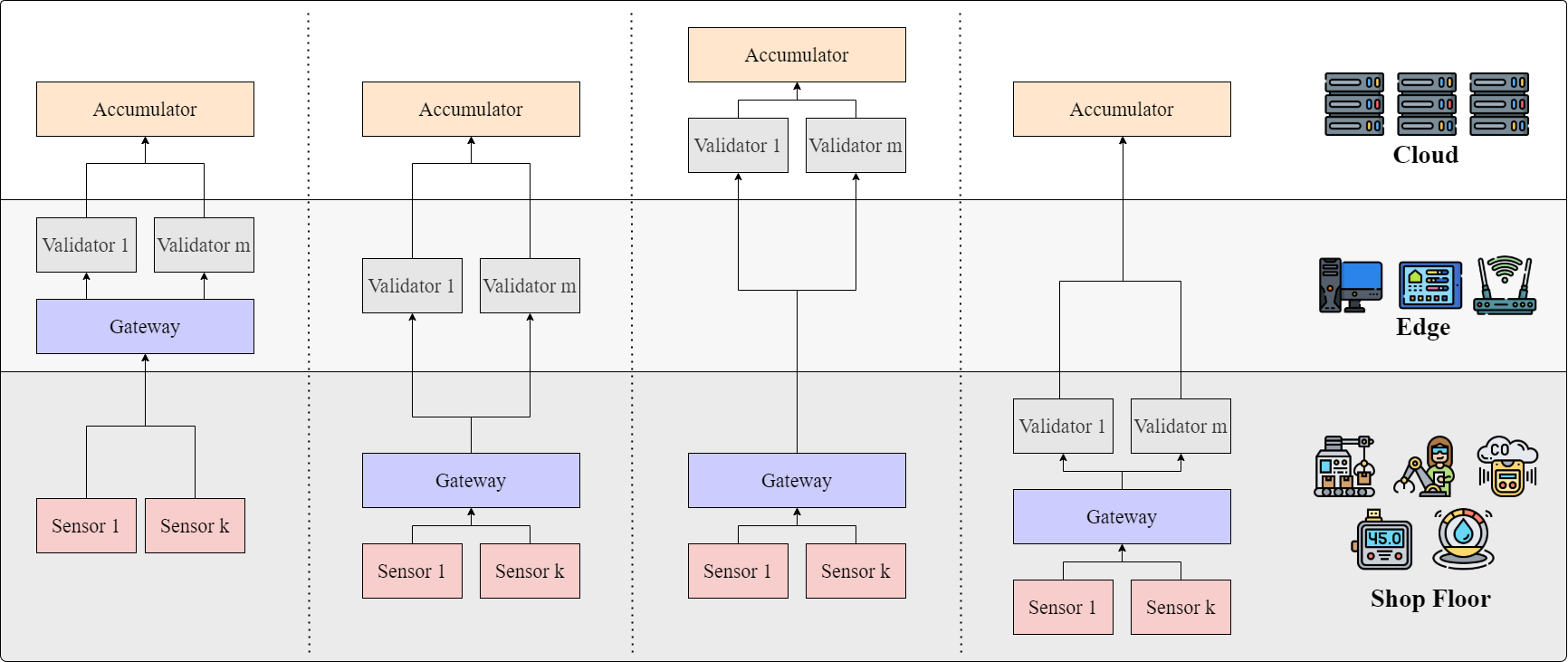Distributed machine learning algorithms that employ Deep Neural Networks (DNNs) are widely used in Industry 4.0 applications, such as smart manufacturing. The layers of a DNN can be mapped onto different nodes located in the cloud, edge and shop floor for preserving privacy. The quality of the data that is fed into and processed through the DNN is of utmost importance for critical tasks, such as inspection and quality control. Distributed Data Validation Networks (DDVNs) are used to validate the quality of the data. However, they are prone to single points of failure when an attack occurs. This paper proposes QUDOS, an approach that enhances the security of a distributed DNN that is supported by DDVNs using quorums. The proposed approach allows individual nodes that are corrupted due to an attack to be detected or excluded when the DNN produces an output. Metrics such as corruption factor and success probability of an attack are considered for evaluating the security aspects of DNNs. A simulation study demonstrates that if the number of corrupted nodes is less than a given threshold for decision-making in a quorum, the QUDOS approach always prevents attacks. Furthermore, the study shows that increasing the size of the quorum has a better impact on security than increasing the number of layers. One merit of QUDOS is that it enhances the security of DNNs without requiring any modifications to the algorithm and can therefore be applied to other classes of problems.
翻译:使用深神经网络(DNN)的分布式机器学习算法在工业4.0应用中广泛使用,例如智能制造等。DNN的层层可以绘制到云层、边缘和商店楼层的不同节点上,以维护隐私。通过DNN输入和处理的数据的质量对于检查和质量控制等关键任务至关重要。使用分散式数据校验网络(DDVN)来验证数据的质量。但是,当发生攻击时,它们很容易出现单一的失败点。本文件提议QUDOS,这是一种加强分布式 DNNN的安全的方法,得到DVN的法定人数的支持。提议的方法允许在DNNN产生输出时检测或排除因攻击而腐蚀的单个节点。在评价DNNPS的安全方面时,会考虑诸如腐败因素和袭击成功概率等计量。任何腐败节点的数量在攻击发生时都低于决策的门槛值。因此,在使用DUDOS的法定人数时,对分布式DNNN的安全级别的影响会增加。










